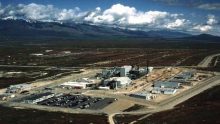
After it’s generated at the source, electricity on the grid cannot be easily controlled or directed. Electrons do not adhere to fancy blockchain-based market designs. Instead, they go to the nearest load. If you have solar panels on your roof, and you produce more electricity than you can use, the excess electricity generated will most likely go to your neighbors fridge, regardless of who bought your energy credit on the blockchain.
That doesn’t mean the blockchain won’t be valuable on the grid, but for true p2p energy trading, expect energy storage, distributed energy, electric vehicles, and the blockchain to join forces at charging stations. It will also be prevalent in developing nations who are already adopting pico solar systems (with batteries) and mobile payment platforms.
Energy Storage is like bacon, it makes everything better (including the energy blockchain)
Battery systems paired with or solar arrays can make renewable energy available on demand, for as long as the battery is charged. Anyone can then pull up to this charged battery, identify itself on the blockchain network, and charge their car, bike, drone, home battery, etc. Since it’s on the blockchain, payments can be settled automatically and records are stored on a distributed ledger.
Renewable Energy Credits (RECs) can be sold independently of electrons. For instance, if you charge your car but don’t care about environmental credit, you can sell those credits to companies and utilities who are required to purchase them.
The charging stations can be grid-connected or off-grid. If they are connected to the grid they can sell electricity to the grid and provide grid services for additional income. Grid services include frequency regulation, Spinning Reserve, Voltage Support, and Black Start Capabilities.
Of course, any potential services batteries provide can be extended to electric vehicles, which adds the mobility factor to energy trading. This opens up new opportunities for getting around the electric utility monopoly (discussed here, here, and here).



